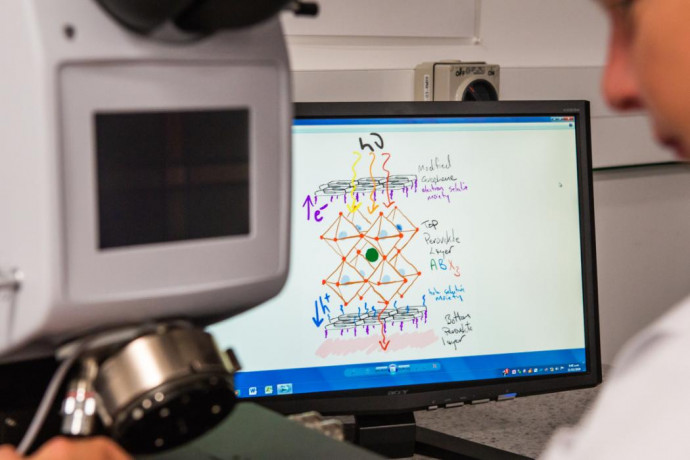Research
Published 26 February 2020Towards a greener future with next generation solar cell technology

University of Canterbury (UC) chemistry researcher Dr Paula Brooksby is at the forefront of research to refine fast-advancing solar cell technology
First published on the University of Canterbury website
Together with Dr Noel Duffy from CSIRO in Australia, Dr Brooksby is exploring the potential of a carbon-based material to revolutionise photovoltaic technology and performance: ‘Graphene’ sounds rather like ‘graphite’ used in pencils. Indeed, the two are related but this lesser known cousin of graphite has rather different properties that put it at the leading edge of scientific research geared towards achieving a zero emissions future for energy production.
The way towards that future lies in the development of efficient electricity generation using renewable sources, as well as large-scale energy storage capacity.
In the vanguard of new solar energy technology are perovskite solar cells, valued for their low production costs and high efficiency. Recent advances in the field suggest the performance of these cells could be boosted still further if metal-oxide electrodes - used to separate photo-generated charges and channel them out of the cell – were replaced with a new graphene substitute.
Dr Paula Brooksby, a Senior Research Fellow in UC’s School of Physical and Chemical Science, observes that graphene is both more transparent and more chemically stable so appears to offer a much better choice than metal oxides.
With the support of a three-year $960,000 grant from the 2019 Marsden Fund Te Pūtea Rangahau a Marsden, Dr Brooksby and co-researcher Dr Noel Duffy (CSIRO) plan to fully investigate graphene as a tool in solar cell design. Their goal is to engineer, for the first time, thin transparent graphene-organic film electrodes and then evaluate their potential use in perovskite solar cells.
“We aim to lay the groundwork for the next generation of solar cell design by providing an entirely new approach for constructing advanced optically transparent thin film electrode materials.”
The 2019 Marsden Fund Te Pūtea Rangahau a Marsden standard grant of $960,000 awarded to this project was the highest such grant made to a UC-led research project in the latest funding round. It was one of six standard grants issued to the university; another six Fast-Start grants were also awarded. These grants support excellence in New Zealand research in science, engineering, maths, social sciences and humanities.
Additional information: University of Canterbury web page
RESEARCHER
Dr Paula Brooksby
ORGANISATION
University of Canterbury
FUNDING SUPPORT
Marsden Fund
CONTRACT OR PROJECT ID
UOC1906 - Molecular wiring of graphene with organic films: optically transparent charge selective electrode materials for efficient solar energy conversion
